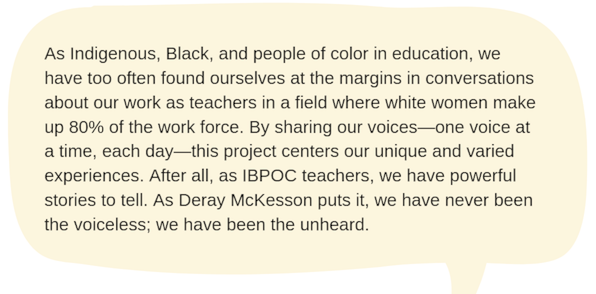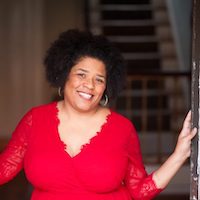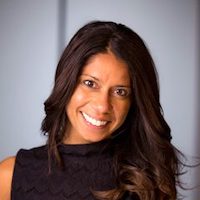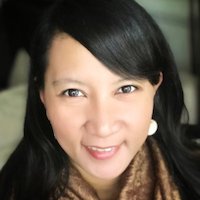How 31 Blog Posts Are Changing My Practice
I grew up in a northern Alberta community that would not have been described as diverse. Typically, you were either white or First Nation (often Cree).
By the time I hit high school there were a few more students but the bulk of my learning years was spent with a lot of what Dr. Rudine Sims Bishop would refer to as mirrors. But they only reflected other people like me. I was not taught to see the true world or asked to be a participant in it.
When I became a teacher, I moved to an even less diverse area of Canada, although the make-up was much the same, with the majority of people identifying in some way with Whiteness and a large portion of the remaining population First Nations (now the predominant group being Blackfoot).
I understood that my world view was not one that was particularly informed. Over the years I became more curious about how I could connect more deeply with that small portion of my student population that was neither White nor First Nations.
The experts in literacy say that all students need those “Mirrors, Windows and Sliding Glass Doors” that Dr. Bishop spoke of. I fully believed this to be true. I wanted my students to become engaged with the world, to understand injustice, to understand inequity, but it was difficult to get my students (mostly white, middle and upper class, rural) to not only relate to but empathize with those whose experience they were not familiar with.
I struggled (and still struggle) to get them to see why the experience of others not like themselves is important – why the words we use are important and why our intentional and unintentional actions have a huge (and often, negative) potential impact on the lives of those students who look different, worship differently, and generally live a life that “majority” students are not familiar with.
So, in essence, I have been looking for answers that can help me become a better teacher to all 900 students who walk the halls of my southern Alberta rural school.
Listening to Powerful Stories
For me, the beginnings of a better answer came in a Twitter-supported project designed and organized by Dr. Kim Parker (@TchKimPossible) and Tricia Ebarvia (@triciaebarvia) entitled #31DaysIBPOC. The project is built around a collection of blog posts that appeared (one each day) in May 2019, describing the experience of 31 IBPOC (Indigenous, Black, People of Colour) educators. The complete collection can now be found at the IBPOC website, where you can also read about the project’s purpose.

The changes I am already making because of this project and these voices will help get me where I want to be. My students will be better served and I hope leave me better prepared to do the work that is needed to create a more equitable world. In large part this shift is due to reading the words of these educators.
Here’s Some of What I Am Learning
There is so much to be learned in the beautiful words shared by the educators writing for #31DaysIBPOC. Let me share some of my thoughts in response to just four of the posts here.
Building Walls
The IBPOC posts began on May 1 with a contribution from kindergarten teacher Aeriale Johnson, “To Washington with Love.” She speaks about her career experience, having to build up walls to protect herself because of the words, comments and actions co-workers, administrators and even district level officials used to address her and describe her when she spoke out.
She talks about those moments as “Bricks.” I was struck by the idea that I too have these Brick moments but also about how even my unintentional words and actions could be seen as bricks by some of my students – my First Nations students specifically.
There’s something that I think many southern Alberta teachers do when studying First Nations in our Social Studies curriculum. We ask students to reduce things of cultural significance to arts and crafts. If it’s not beading our own Wampum Belts (please don’t do this for so many reasons), it’s having the students build dioramas showing First Nations “life” (guilty of this myself, know better, doing better but still a long way to go).
After reading Aeriale’s post, I could not shake the feeling that I had indeed put my First Nations students in a situation that was insulting. In my past teaching experience, I had helped to contribute bricks in a wall that isolated them from the class because I took their culture and heritage and reduced it to shallow arts and crafts projects.
I would call on them to verify information from the text book (which often was inaccurate to their experience and about an entirely different group of people) and expect them to contribute to the discussion – pushing them into an “other” category – expecting them to serve as some kind of First Nations spokesperson among their entirely white classmates.
This relatively simple realization has already had powerful results. I have started looking to sources from outside our textbook, I have made sure that I do not “other” my First Nations students by putting an uninvited spotlight on them. Being more aware of my words and actions and the resulting Bricks my students may form because of them has increased my awareness and sensitivity.
Erasure through Silence
A second point or theme comes through to me as I read these amazing posts over and over again. It’s that the silence of marginalized students and their quest for acceptance tend to erase the unique and much needed diversity that we already experience so little of in my small rural southern Alberta community.
In Sara Ahmed’s post, “Socialized: A Letter to My Younger Self ,“ she writes to a younger self to discuss the things she will encounter and do:
“…you won’t speak up when you know, deep in your own humanity, a perpetrator is robbing someone else of their humanity.”
I read this line and had an Aha moment. I am always perplexed when I have students of colour jump in to make fun of themselves or other students of colour. When I have talked to them about it and asked why, the response most commonly is a shrug or “They are going to do it anyway so we might as well jump in and laugh with them.”
These are tools to protect themselves, but going back to the earlier point, they are making more bricks. Sara’s post and others that recount similar actions that protected them from some level of discrimination helped me to see more of what my students of colour are up against.
I have at times been the person that stops others from robbing them of their humanity until they have the tools, the confidence and the knowledge that others will show up for them when they stand up for themselves. But I have not done enough to be that protector. I have accepted the “It’s fine” or “No really Mr. Gilson I make fun of my own people.”
Just saying it isn’t okay isn’t enough. We need to be teaching all of our students that it’s never okay to push conformity with the majority culture. Teachers need to be celebrating the diverse cultures around us so our students (in my case, all 900 of them) see diversity as something to celebrate, not erase.
Another fantastic #31DaysIBPOC contribution addresses this in a different way. In her post “How do we show up,” Tricia Ebarvia recounts her efforts to blend in as a youth. These words shared a perspective that I was not aware of. I plan next year, through conversation with all my students, to work on ways to celebrate culture more, while making sure we do not talk about race, culture or even religion in ways that “other” any student in our school community. I want all my students to be seen, to be heard, to be comfortable, and to be a celebrated part of our classroom environment.
Where to Start
Over the summer, I’ll be writing more on this topic at my personal blog, Things Mr. G Says. I’ll continue to share some targeted first steps, knowing I am nowhere near the finish line. As a white rural educator, I have so much to learn about the experiences of my students of colour.
As a school community, and a worldwide teacher community, we also have a long way to go before all our members feel seen, heard and celebrated. This work should not fall on the shoulders of Educators of Color because it is not fair to ask them to fix something they did not create. In my case, there are very few EOCs in my school division and none in my school. The work needs to begin, and why not with me?
In the post “Fence-Testing in the Hyphenated Present,” educator Antero Garcia draws on Juraissic Park for a metaphor “to frame the ingenuity of young people.” Educators, he says, should “be fence-testing the conditions of schooling, learning, and inequity, like patiently impatient raptors prodding for liberation.”
We need to test the system’s “fence” for places where we can break through to make it better. Challenge the textbook representations, challenge the required texts, challenge stereotypes that continue to damage our students of colour that are based more on ignorance than experience.
Check out Twitter and hashtags like #Disrupttexts, #Educolor and #Cleartheair to actively learn from educators of colour who are out there doing the work. But don’t ask them to do it for you, and most certainly don’t ask them to do it for free.
I can challenge the system. I can teach about representation with a much more critical lens as we open a textbook that not only doesn’t contain current information, but what it does contain does not cover the diversity of our past.
Small steps are being made but we have a long way to go. Yesterday was our High School graduation. We had a Blackfoot elder open our ceremony with a prayer and blessing that she delivered in Blackfoot, and then she added some in English. She was a grandmother of one of our graduates. It was beautiful and followed by some ceremonial drumming.
In that moment, I felt that student and his culture was seen, recognized and hopefully appreciated, but I know they had not always felt that way. Not in the past and not this year.
I am so entirely grateful for the experience of reading though the beautiful posts from #31DayIBPOC. I encourage you to check them out.
This is my experience, but the stories shared deserve to be read by everyone so I pass the mic. Thanks for joining me in learning.
Brent Gilson (@mrbgilson) is entering his 10th year of teaching. He began his career in a third grade classroom and has since spent time in grades 4,6,7 and 8. Brent currently teaches at the middle level in a small community in southern Alberta, Canada. He enjoys talking books with his students and writing for his blog thingsmrgsays.com and occasionally recording a podcast. Watch for more of Brent’s posts here at MiddleWeb in the coming school year.










































Thanks so much for sharing, Mr. G! I am going to check out the blog posts this weekend. I am grateful!